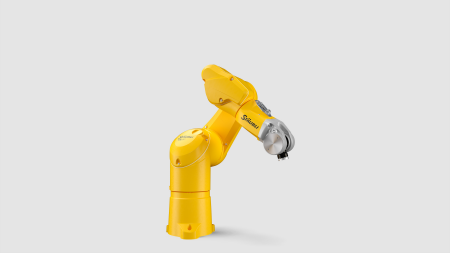SUCCESS STORY
Robot and injection molding machine working in harmony
A British plastics processor has invested heavily in the full processing of components by robots alongside the presses. The concept has been so successful that the robot is now part of the package with every new injection molding machine ordered.
CUSTOMER BENEFITS
- Lean intralogistics
- High productivity and cost-efficiency
- Space-saving solution
- Synchronous execution of multiple work steps
TASK
Full component processing alongside the injection molding cell
Automotive supplier WHS Plastics has invested heavily in the automation of its injection molding cells, some of which incorporate two robots. The multinational company integrates sequential steps handled by high-performance Stäubli robots directly into its production cells.
Based in Sutton Coldfield, UK, WHS Plastics is a well-known supplier to the domestic vehicle manufacturing industry. The company, which has around 1,000 employees and also serves customers outside the automotive sector, operates more than 75 plastic injection molding machines producing ready-to-install components and modules.
WHS Plastics success can be attributed to a very high degree of automation. The in-house systems designers have set out not only to automate the process for removing parts from the mold but also to integrate downstream tasks directly into the injection molding cells.
SOLUTION
Robots working alongside injection molding machines
For this purpose, around 50 Stäubli robots have been installed alongside the injection molding machines. In a current project, two different TX series robots are used in a single cell. The injection molding machine presses a large-format vehicle tailgate panel. The first robot – a substantial Stäubli TX200 – removes the injection-molded part from the mold and positions it on an assembly rig while continuing to hold in place.
Meanwhile, the second robot – a smaller Stäubli TX60 – picks up the first of several fasteners which arrive on vibratory conveyors and are dropped onto a separation station. The TX60 then affixes multiple clips of different design to the tailgate, by means of which the inner trim will subsequently be attached. During this process, the TX200 retains a firm grip on the component. Meanwhile, the next tailgate panel is being pressed in the injection molding machine.
When the highly dynamic TX60 has completed its task and affixed all the clips, its larger “colleague” removes the panel from the clamping device and places it on an output conveyor which transports the preassembled module to the next processing station.
CUSTOMER USAGE
Full component processing is efficient, productive and economical
WHS Plastics also produces other automotive components according to the same concept, benefiting from the synchronous execution of three process steps: injection molding of the panel, removal by a robot from the mold, further processing by the same robot, if necessary – as in the example shown here – with the help of a second robot. In injection molding applications, the Stäubli robots impress with their high dynamics, precision and reliability.
With the solutions implemented, the company has saved time and space while ensuring a high level of quality, because the robot provides fatigue-free, reproducible performance, allowing quality assurance also to be integrated into the cells. A further advantage is that a largely finished or at least preassembled component is produced in a compact space. The concept of robotic automation continues to be so successful for WHS Plastics that Stäubli robots are now routinely ordered as part of the package with each new injection molding machine
